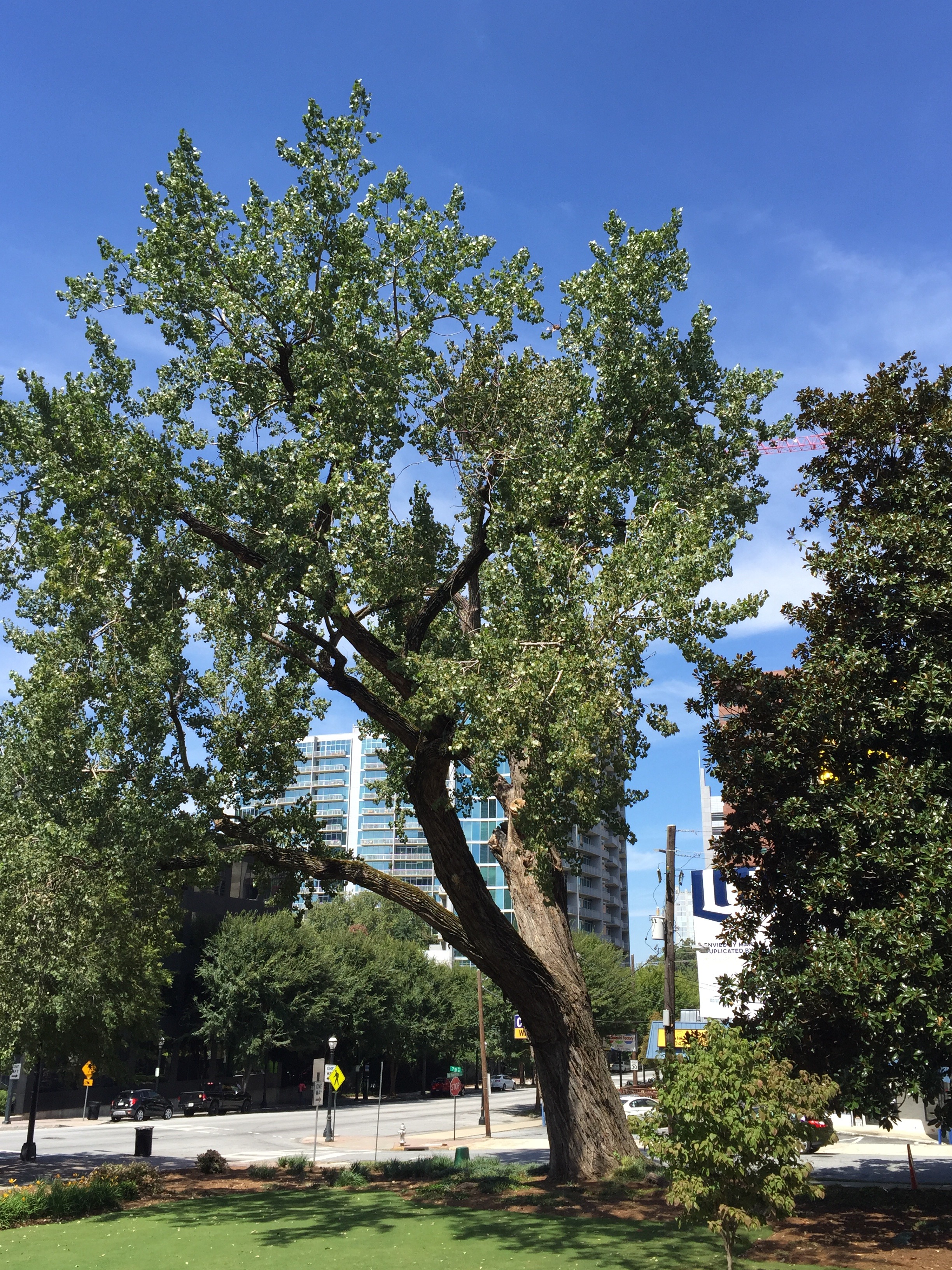Tree Removal Begins This Week at Historic Academy of Medicine

The 82-inch caliper Eastern Cottonwood at The Historic Academy of Medicine has reached the end of its life and will be removed later this fall. Tech has been in contact with the city arborist to ensure the City of Atlanta Tree Preservation Review Board has been made aware of the required removal. Since taking over this historic property, Tech has made significant efforts to save the tree through fertilization, proper pruning, and more. Despite these efforts, the tree is splitting throughout its trunk area a
Trees contribute to the Georgia Tech community by providing environmental, social, economic, and aesthetic benefits. Managing these trees and the urban forest they create is a responsibility that is taken very seriously. Georgia Tech sees the forest for all the trees and makes sure that not one goes unnoticed.
After careful and thorough assessments that included engaging with third-party tree specialists and City of Atlanta arborists, an Eastern Cottonwood at The Historic Academy of Medicine will be removed this week due to safety risks.
“Removing an iconic tree on campus due to structural failures and safety concerns is one of the most difficult decisions I have to make,” said Hyacinth Ide, associate director of Landscape Management. “However, we are very conscientious in making such decisions. Third-party assessments along with replacement and reclaiming strategies all synthesize to ensure that our urban forest campus status is preserved for generations to come."
Characteristics such as water availability and soil nutrient capacity greatly impact how a tree will fare during its lifetime. In an urban environment, these factors tend to vary over time, especially when major land-usage changes, as seen on campus, are involved. Sometimes, water flow or impacts to root systems change significantly during a major construction project, other times a tree has grown too big to fit in the space available, and, sometimes, a tree dies after it has run the course of its lifespan.
A diverse group of stakeholders works very hard to avoid tree failures on campus. The Facilities Management team includes two certified arborists and a landscape architect. Together with members of the Capital Planning and Space Management department, these Tech employees regularly evaluate tree health and ensure that master planning efforts include greenscapes to support and expand the urban forest. Tree removal decisions are made only after extensive efforts to save the tree — often involving third-party reviews — have been made.
To responsibly plan and manage the trees, this team relies on a variety of tools and programs including Tech’s Campus Landscape Master Plan, the Tree Campus USA Committee, and a Tree Bank. In line with this focus on tree management is Georgia Tech’s Tree Care Plan replacement policy, which requires that every 1-inch-diameter caliper of tree removed is replaced by a tree of 1-inch caliper or more in diameter.
Tech’s diligent urban forestry management practices as well as its commitment to Tree Campus USA ensure the Institute will keep building a strong urban tree canopy in Atlanta. In fact, Tech’s Fifty Trees Project supports the planning and purchase of a minimum of 50 additional trees per year to improve Tech’s green space and strengthen the urban forest.